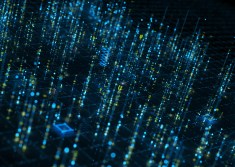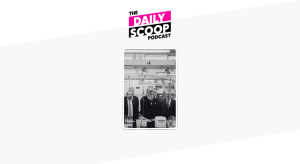 The Internet of things is the connectivity of all the devices we use on a daily basis, through sensors. (Image: iStockphoto)
The Internet of things is the connectivity of all the devices we use on a daily basis, through sensors. (Image: iStockphoto)Humans are creatures of habit.
For the most part, people wake up at the same time every day, take the same route to work, grocery shop at the same store and buy the same brands. Washington especially is a town characterized by structure, routine and tight schedules.
So from a statistical perspective, we are predictable — and possibly boring — but that’s exactly what creates unlimited possibilities in the burgeoning “Internet of Things.”
Imagine an alarm clock communicating with your coffee pot; the coffee pot delays if the alarm is snoozed, or a refrigerator that orders new groceries automatically before you run out. The Internet of things is the connectivity of all these devices we use on a daily basis, through sensors.
“It’s convenient and creepy all at the same time,” said Benjamin Robbins, a mobility expert and principal at Palador. “The challenge is finding a balance of the exponential explosion of connectivity and who owns the data behind all of that.”
The biggest question in all of this, he said, is who is responsible for the data devices collect? The information required to make convenient connectivity work is personal and private information to which outside vendor would have access. In the IoT, the information from the connectivity doesn’t go to the user; it goes to a server in the cloud.
But much of this information is already being tracked, Robbins explained. It is almost impossible not to have a digital footprint — there are sensors in phones tracking location, sensors on your televisions and thermostat sensors monitoring temperature.
The technological capability is already there. Now, there’s an entrepreneurial opportunity.
The service component is where Robinson expects to see IoT take hold. As more devices are offered by Google, Samsung, Microsoft or Apple, there are opportunities for a service to connect those different devices.
According to a recent IDATE report, 15 billion things — machines, connective devices and objects — were connected to the Internet in 2012, up from 4 billion in 2010. Samuel Ropert, a project leader for the report, estimates that number will be up to 80 billion by 2020.
From a manufacturing side, there are huge efficiency gains to be made. People who are connecting these different devices to communicate with each other for delivery and production services can expect to be much more productive than those who do not, he said.
One example is grocery store freezers: sensors could communicate with the store and manufacturers when to replenish or divert supply. In times of natural disasters or emergencies, IoT could be used to gather information on who is at shelters and where to divert resources.
“It’s where cool and creepy co-exist, the services are where you take all capabilities of these devices and tie them together; but it’s also the place for potential abuse,” Robbins said.






